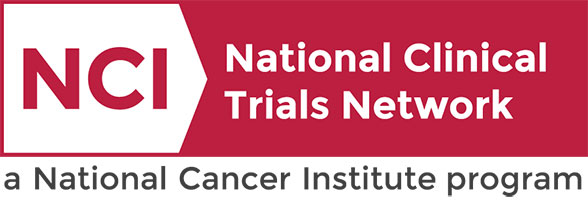Study shows sharp increase in appendix cancer for Generation X and millennials
Cases of appendiceal cancer tripled for Americans born between 1976 to 1984 and quadrupled for those born between 1981 to 1989, according to a study published June 9 in the Annals of Internal Medicine.
The study compared chronological data in five-year intervals from the National Cancer Institute’s Surveillance, Epidemiology and End Results (SEER) Program, using 1941 to 1949 as the baseline. The lead author, Andreana Holowatyj, PhD, MSCI, assistant professor of Medicine at Vanderbilt University Medical Center and Vanderbilt-Ingram Cancer Center, said the findings reveal the need for increased awareness about appendiceal cancer from both clinicians and the public as well as more research to determine the reasons for the sharp spike in incidence.

“When you take these alarming rates that we are seeing for appendiceal cancer across generations, together with the fact that 1 in every 3 patients diagnosed with appendiceal cancer is diagnosed under the age of 50, these point to a timely need for everyone to be aware of the signs and symptoms of appendix cancer.
“Albeit cancer of the appendix is rare, it is important for individuals who have these symptoms to see a health care professional. Ruling out the possibility of an appendix cancer diagnosis, or diagnosing it early, is important for this cancer as we continue to learn what factors may be contributing to this worrisome trend,” Holowatyj said.
Symptoms may include abdominal pain, bloating, changes in bowel habits, and loss of appetite.
Appendiceal cancer is a rare cancer with about 3,000 new cases diagnosed every year in the United States, according to prior studies, but Holowatyj and colleagues took a closer look at statistics by combing through the SEER database.
“As incidence rates in younger generations are often indicative of future disease burden, these results support the need for histology-specific investigations of appendiceal adenocarcinoma, as well as increased education and awareness of appendiceal adenocarcinomas among health care providers and the public,” the study stated.
Appendiceal cancer has had no standardized screening guidelines, risk factors or tumor classifications — a lack of clinical evidence that has resulted in late diagnosis and poor prognosis. Up to 1 of every 2 patients is diagnosed with distant metastatic disease, and five-year survival rates vary between 10% and 63%.
Earlier this year, Holowatyj and a team of experts identified six key research priority areas to deliver a fundamental understanding of appendiceal tumors and to improve treatments and outcomes for patients.
The recommendations published Feb. 20 in Nature Reviews Cancer are the result of a concerted focus by the Appendix Cancer Pseudomyxoma Peritonei (ACPMP) Research Foundation to better understand the disease that afflicts an estimated 3,000 new patients across all age groups each year.
The recommendations arose from the inaugural ACPMP Research Foundation Scientific Think Tank, sponsored by ACPMP and chaired by Holowatyj at Vanderbilt-Ingram Cancer Center in December 2023.
The current study in the Annals of Internal Medicine received support from ACPMP and the National Institutes of Health (grants K12HD043483 and P50CA236733).
Other authors on the study are Mary Kay Washington, MD, PhD, professor of Pathology, Microbiology and Immunology at VUMC, Richard Goldberg, MD, of the West Virginia University School of Medicine, and Caitlin Murphy, PhD, MPH, of the UT Health Houston School of Public Health.
The post Study shows sharp increase in appendix cancer for Generation X and millennials appeared first on VUMC News.
Presurgery consults with patients using 3D models improve shared decision-making and reduce anxiety
Aimal Khan, MD, assistant professor of Surgery at Vanderbilt University Medical Center, noticed the puzzled or anxious expressions of patients trying to fully comprehend what he was saying during preoperative consultations, so he devised visual aids — three-dimensional models of the lower digestive tract.
The 3D models allowed patients to easily distinguish the ascending colon from the sigmoid colon, along with other parts of the digestive system. Patients could actually see where the surgery would occur, and Khan noticed that they asked more questions, felt more confident and seemed less anxious. He devised a study to determine whether his personal observations were scientifically valid.
The study, which was published June 3 in JAMA Network Open, determined that the 3D models made patients feel they played a bigger role in decision-making and that their anxiety levels decreased.
The patients were scheduled for partial or complete colon and/or rectal resections for colorectal cancer, diverticulitis or inflammatory disease. Fifty-one patients participated in the study with 28 receiving consultations using the 3D models and 23 receiving conventional consultations. The patients in the 3D arm of the study reported a significantly higher involvement in shared decision-making and significantly reduced anxiety levels compared to the other patients.
Khan and five other Vanderbilt surgeons conducted the study from March 2022 to June 2023.
“Using 3D models during consultations allowed our patients to truly visualize their surgery, which not only empowered them to take an active role in decision-making but also significantly eased their anxiety. This approach has the potential to transform how we communicate complex information to our patients. We are currently working with surgeons from other specialties, including thoracic surgery, ENT and surgical oncology, to validate these findings in a multicenter randomized trial,” Khan said.
The findings are important because other studies have shown that improvements in shared decision-making are associated with reduced hospital stays, lower health care utilization, improvement in patient-reported health outcomes and fewer emergency department visits.
The 3D models used in the study were developed in collaboration with the Department of Radiology. The modular designs, which were made with 3D printing, allowed each segment of the colon and rectum to be magnetically detached and reattached.
To the knowledge of the study’s authors, this is the first randomized clinical trial to compare the effectiveness of a 3D-printed model with usual care on colorectal surgery patients’ involvement in decision-making, anxiety and education.
Other Vanderbilt researchers who authored the study are Danish Ali, MD, Shannon McChesney, MD, Michael Hopkins, MD, Molly Ford, MD, Roberta Muldoon, MD, Timothy Geiger, MD, MMHC, Alexander Hawkins, MD, MPH, Georgina Sellyn, MA, Hillary Samaras, RN, and Dann Martin, MD, MS.
The post Presurgery consults with patients using 3D models improve shared decision-making and reduce anxiety appeared first on VUMC News.
Claudia Gonzalez-Hunt, Ph.D.
- Assistant Professor of Medicine (Genetic Medicine)
Claudia Gonzalez-Hunt, Ph.D.
- Assistant Professor of Medicine (Genetic Medicine)
claudia.gonzalezhunt@vumc.org
Research Program
Research Description
Brian Shirts, M.D., Ph.D.
- Associate Professor of Pathology, Microbiology and Immunology
Brian Shirts, M.D., Ph.D.
- Associate Professor of Pathology, Microbiology and Immunology
b.shirts@vumc.org



